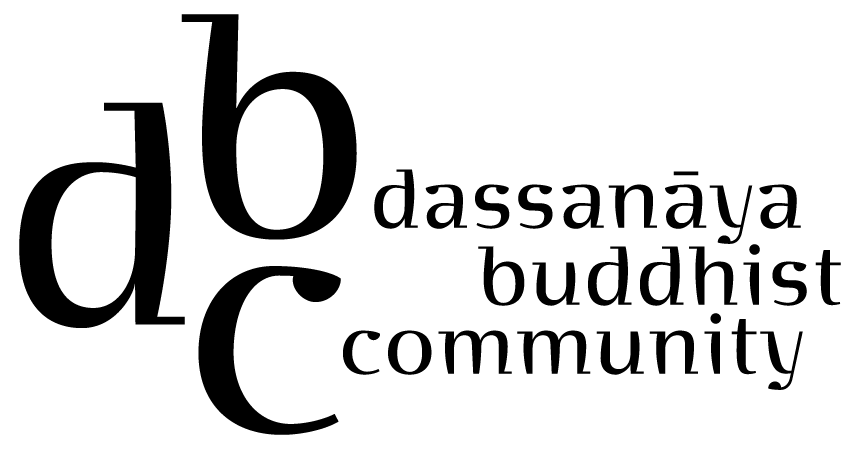The Practice and Precepts of a Bhikkhuni
Ayya shares what it means to her, both in terms of the Way and in practical terms
Image from the Kathina (cloth giving ceremony) at Karuna Buddhist Vihara 2019 (?)
The Theravada bhikkhuni (female monastic) form is based on the Vinaya, a collection of teachings, stories about past practitioners, and lifestyle rules for Buddhist monastics. It is one of the three baskets of the Dhamma; they are the Suttas, the Vinaya, and the Abhidhamma. At its best, the Vinaya establishes the structure of deep, long-term, practice-based relationships among the various members of Buddhist communities. They are meant to allow bhikkhunis (and bhikkhus – male monastics) to focus exclusively on those activities that the Buddha saw as directly related to awakening, leaving behind everything else. Interestingly, those activities include not only meditation and ritual, but also traveling to visit students and friends of the Dhamma, teach, and offer spiritual guidance.
The Vinaya also creates interdependence because those monastics who adhere to it must maintain a daily physical presence with those who wish to offer food, medicine, clothing, and housing – all of the four requisites. This, in turn, creates mutual responsibility because community members regularly experience each other's practice in these embodied encounters. If there is not enough appreciation to sustain every participant in the relationship, then it just doesn't work and comes to its natural end. If there is mutual appreciation and support, the community grows.
The Patimokkha (lifestyle rules within the Vinaya) mainly serve one of four functions:
* Humility and the intention not to be a burden to each other
* Celibacy and morality
* Safety, especially when traveling
* Taking care of each other’s health and of the resources entrusted to the community.
There are bhikkhunis in most Buddhist traditions including Chinese Chan and many other Mahayana traditions. In fact, it was the strong and compassionate Mahayana bhikkhunis of Taiwan and South Korea who helped the Theravada Bhikkhunis re-establish their lineages over the past 40 years. The first Chinese bhikkhunis had originally received their lineages from Theravada bhikkhunis from Sri Lanka many, many centuries ago. In contemporary Theravada traditions, bhikkhunis are rare for a variety of reasons including misogyny and lack of financial support from the laity. The generous and gentle practice of Sri Lankan bhikkhus has been, and will likely continue to be, central to the growth of bhikkhuni lineages in the United States.
Although there are many versions of the Vinaya tradition, Soto Zen, which is the other Buddhist tradition in which I am fully ordained, left the Vinaya behind. Perhaps this was an effort to be more egalitarian and independent, and perhaps it was due to the concern that the form could not be maintained in Japan. However, Vinaya is a part of the Zen heritage of China, Vietnam, and Korea.
In practical terms, the practice of a Theravada nun (first samaneri and then bhikkhuni) is what I was doing for the three and a half years that I was a resident nun at Aloka Vihara. Of course, I continue to study and meditate, teach and write, and tweet Dhamma as a bhikkhuni.
I also remain fully committed to the bodhisattva vows I took about 18 years ago, and I have no intention of returning my Zen monastic robes that I received in 2007. That is, I intend to fulfill the role of a monastic in two traditions, not to mix them, but to respect each of them as an independent and powerful expression of the Dharma. I will continue to teach both Zen Buddhism and Theravada Buddhism, usually not at the same time. That said, my personal practice is now primarily Theravada in form and substance.
I am using the title "Ayya." Ayya is the Pali word for noble woman, so it means the something akin to “Venerable” or “Ma’am.” I am no longer a samaneri, the novice nun Theravada practice before the bhikkhuni form. It’s also fine to call me Dhammadipa, my Theravada name, which has two parts: “Dhamma” which is the same word as the Sanskrit “Dharma” and means “truth, reality, principles, the Buddhist teachings” and “dipa” which means “lamp” or “island” or “light.” I attend a gathering of bhikkhunis on the full and new moon days of the month, and I have an additional outer robe called “sanghati” that is used for those gatherings. However, everyday life here at Dassanāya Buddhist Community is very simple for me.
In short, I began to explore whether Theravada practice was right for me in the fall of 2017. What I discovered was that practicing Theravada Buddhism has allowed me to be more skillful with my mind. It has given my practice on and beyond the cushion a detail, breadth, and depth that is impressive and inspiring to me.
The great wide road is open to all beings, and I have been blessed to see many doors and pass through them wholeheartedly.
May my practice benefit all beings!

